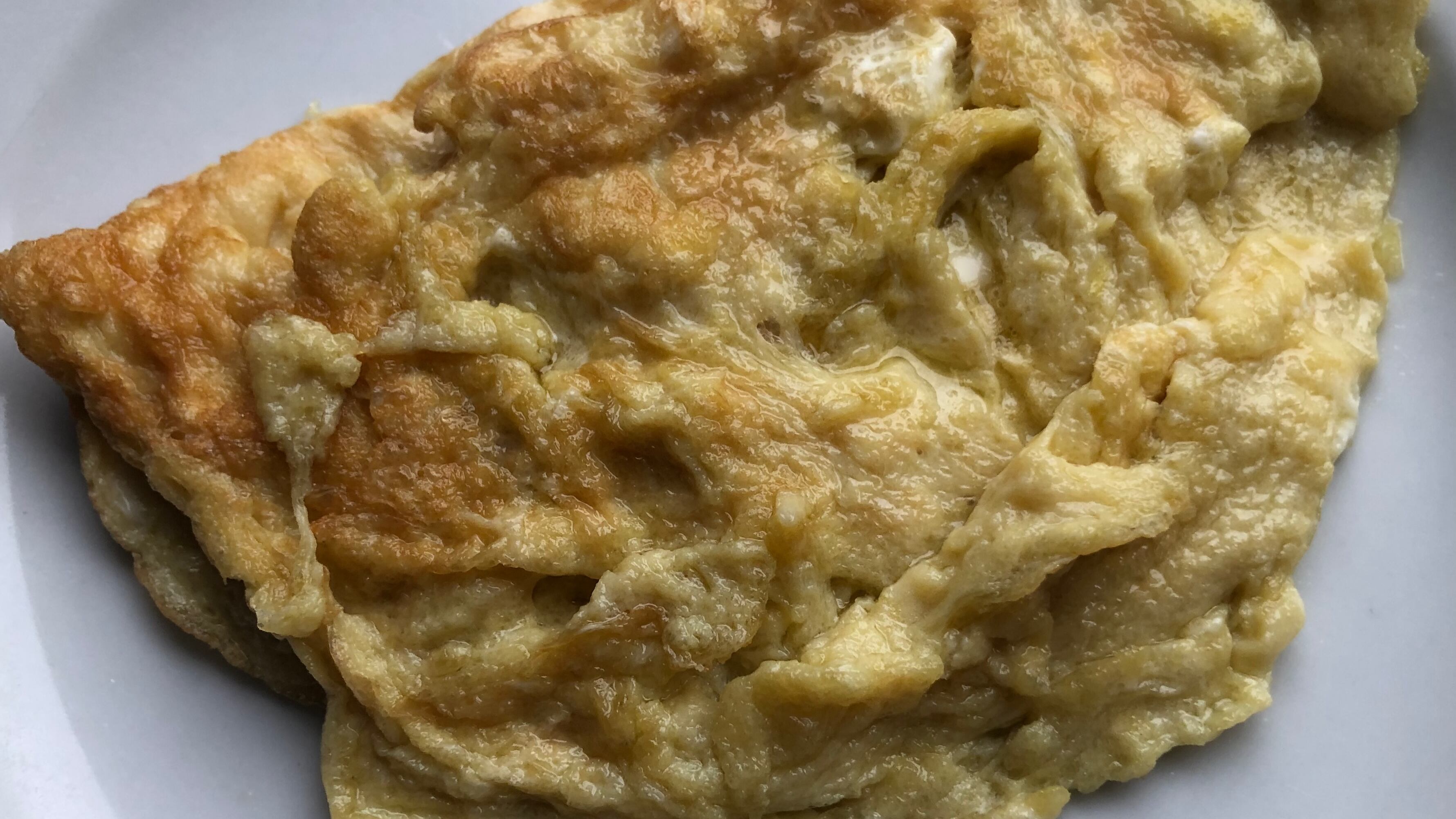Jim Dixon wrote about food for WW for more than 20 years, but these days most of his time is spent at his olive oil-focused specialty food business Wellspent Market. Jim’s always loved to eat, and he encourages his customers to cook by sending them recipes every week through his newsletter. We’re happy to have him back creating some special dishes just for WW readers.
I didn’t know anything about Thai omelets, but I was watching a short documentary about Sriracha sauce and, in the background, a cook poured beaten eggs into a hot wok and made a puffy, browned omeletlike thing. Google told me that the puffed-up omelets are called kai jiew, and that they’re typically made with fish sauce and green onions.
But it was the technique that fascinated me. I didn’t want to get out my wok, so I grabbed one of my smallest cast-iron skillets, a 5-inch Griswold number 3. For those not obsessed with old cast iron, Griswolds were made in Pennsylvania up until the 1950s and are prized for their smooth, machined cooking surface. I got my first one when my grandmother died and have been buying them whenever I see one at a garage sale or thrift shop. While prices have gone up and larger skillets can fetch $50 and more, the small ones are more common and often very affordable. But the same size Lodge works just as well and costs less than $15. Anyway, the little skillet worked perfectly for my simple one-egg version.
I use olive oil of course, and when you add it to the hot skillet it will start smoking, so have your egg ready and act quickly. Test the oil with a bit of egg dripped off your spoon; it should puff and get brown immediately, and if it doesn’t, wait a few more seconds. While you could scale the recipe up with more eggs, it’s easier to flip the smaller omelets, so proceed at your own risk if you try a big one. And the one egg version puffs up so much it seems like two eggs anyway.
While kai jiew are usually eaten with a bowl of rice, I often eat them with country gravy, a twist on bechamel-topped eggs benedict. But my grandson Edwin, who picked up a love of cooking and a sophisticated palate from his dad, likes me to top the omelet with grated cheese and salsa, then flip the whole thing onto a flour tortilla. Lately I’ve been putting them between bread for a quick egg sandwich. But you do you.
Puffy Thai-style Omelet
1 egg
1 teaspoon fish sauce
1 tablespoon extra virgin olive oil
Beat the egg with fish sauce. Heat a small skillet (or wok) over medium high for a few of minutes, then add the olive oil. It should send up a wisp of smoke.
Let a drop of egg fall into the oil to test the temperature. If it puffs up instantly, it’s ready. Pour the egg mixture in and as the edges begin to firm up, push them inward and tilt the pan to allow the liquid eggs on top to run underneath. It only takes a minute or so to get the bottom golden brown, so when the top is still a little runny carefully lift one side and fold it over into a half circle (if you want to add cheese, do it just before you fold). Let the omelet cook for a few more seconds, then slide it onto a plate.
For an Edwin-style kai jiew quesadilla, spread a small handful of grated cheese onto the omelet but don’t fold it over. Add a little of your favorite salsa or hot sauce and put an already-heated flour or corn tortilla on top. Remove from the heat, hold an inverted plate over the skillet, and quickly turn everything over so it ends up tortilla-side down.

